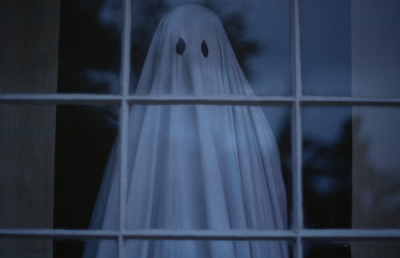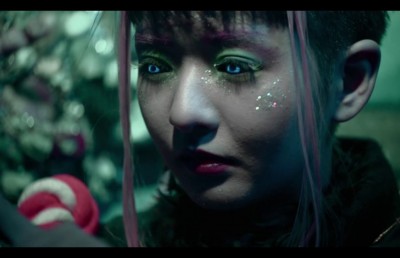Good Time on the Death Line at Fantasia 2017
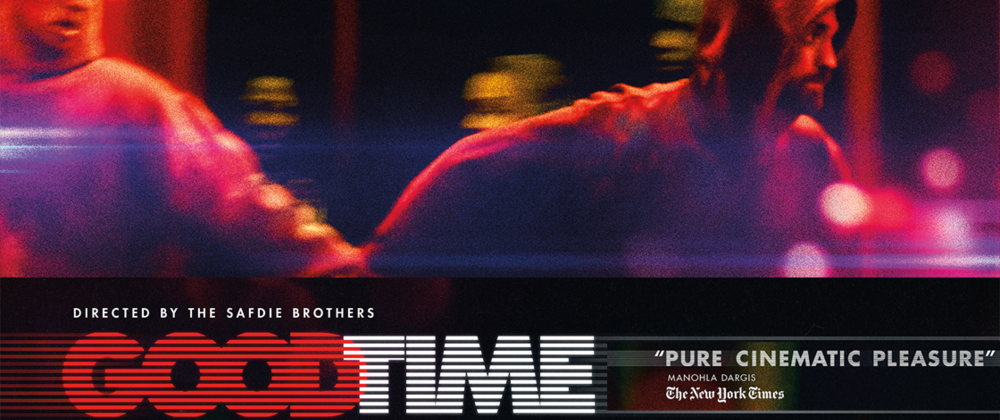
This year’s (2017) hottest ticket was undoubtedly Good Time. The Safdie brothers were in the house along with lead actor Robert Pattinson, hot off of “saving” what Mark Perenson called one of the worst editions of Cannes in decades (2017, 40). But that’s not damning the film with faint praise, for it is indeed a tour de force whose reputation preceded it, and the crowd was pumped. I didn’t know if I’d get into the screening as press access is limited at sold out shows, and ALL the press showed up for this one. But I did my duty and lined up early, ignorant of the Safdies’ prior work and curious about all the hype. When they told us the project had been instigated by Pattinson as part of an anti-typecasting strategy in the wake of his Twilight fame, I was sceptical. But it only took a few moments for any doubt to be dispelled.
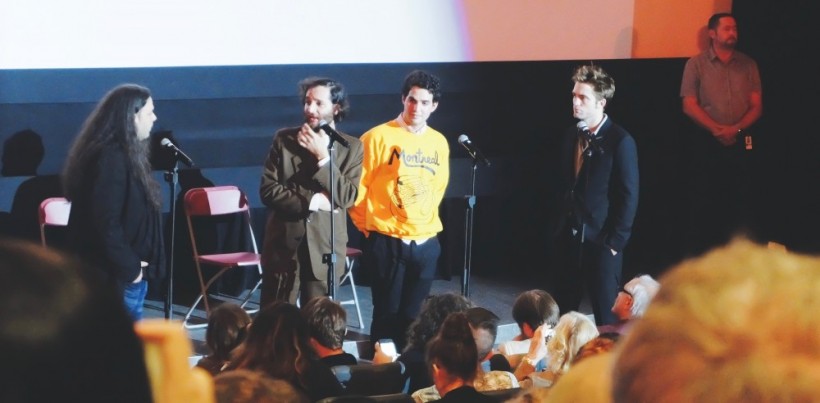
The Safdie Brothers with Robert Pattinson at the North American premiere of Good Time [Photo by Randolph Jordan]
While Pattinson’s sleazily charismatic Connie carries the bulk of the film, our first encounter is with his brother Nick, played by Benny Safdie, whose opening performance steals the show and lays the groundwork for our investment in all that follows. Exhibiting some unnamed cognitive disability, Nick sits in a therapy session playing word association games with a psychiatrist. He is asked about salt and water and he says “the beach.” But here a tear streams down his face, and before we know anything about this character or his brother we’re in deep. And then Connie bursts into the room to free his brother from this exploitation perceived as unnecessary. The next thing we know they’re robbing a bank and Nick is nabbed by the police after proving incapable of keeping it cool enough to pull off the getaway. Connie then spends the rest of the film trying to figure out how to get him back and ends up very far off the path he laid out for himself.
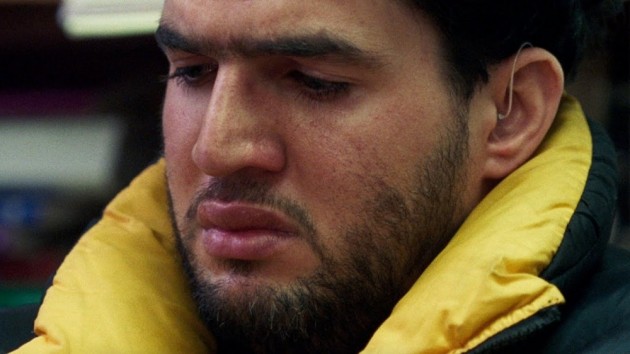
With the star power to get projects off the ground, Pattinson managed to convince the Safdies to interrupt work in progress to knock this one off guerrilla style, chasing their stolen shots through the streets of Queens and Brooklyn like the renegade bottle of liquid LSD that drives the latter half of the film’s action. They resurrect the grit that still lives on the margins of a city whose core has been largely given over to the tourist cleansing of the Giuliani era. For his first outing on 35mm, cinematographer Sean Price Williams sets this grit in stone through his choice 2 perf film stock, a format that splits the nearly square frame in half horizontally to yield two widescreen frames that, when blown up, are thick with grain that looks closer to Super 16mm. Paired with hot colours and low light, much of it limited to whatever was available on the night time streets, the film bleeds off the screen, spreading out across the hallucinatory electronic score by Oneohtrix Point Never, moniker of Brooklyn-based Daniel Lopatin, who won the Soundtrack Award at Cannes for his work on the film. The Oneohtrix score swirls around the multi-channel mix, destabilizing our perspective on the action as much as the hand-held photography as the narrative continually threatens to fly apart at the seams with each successive snafu along Connie’s trajectory.
Lopatin’s music is associated with the “hypnagogic” genre of electronica that arose in the aughts, marking its early 21st Century territory by – what else? – appealing to instruments and technologies from the 70s and 80s. Experimental film enthusiasts might be more familiar with the term from Stan Brakhage’s evocation of hypnagogic vision, what we see when our eyes are closed, the grain of our retinas firing without information passing through the lens, prompting his ultimate pursuit of cameraless filmmaking to explore film’s potential to act as prosthetic to the mind. Though not a connection made by the filmmakers or any of the musicians that I’m aware of, there is a symmetry in the way these elements come together in the film, the grain of analog synth sounds dovetailing with the grain of the film, which often lurches towards the kineticism of a Brakhage film, hand painted or otherwise.
_440_653_90.jpg)
But let’s not mistake the film’s aesthetic flourishes for a preoccupation with representing or reconstructing interior experiences, psychedelic or otherwise. The position of the bottle of LSD throws the film’s deepest power into stark relief. The acid is there to be sold, not enjoyed, and none of the action is fuelled by a drug trip – until they pour a bunch of it down the throat of a restrained security guard as a means of escaping from the amusement park where it was stashed, a nasty bit of business when considering the consequences of such a large dose, compounded by its infliction on an innocent black man by two white fugitives who also steal his keys and hole up at his apartment where the last act unfolds. And this racial power dynamic is writ large across the film as a whole: the brothers begin their saga by robbing a bank wearing black-skinned masks, and pretty well every good citizen that Connie comes across while trying to get his brother back is black. He is dishonest and manipulative with all of them, from the woman in line for the hospital shuttle service that he cuts in front of while breaking the wrong man out of his room, to the woman whose apartment he sweet talks his way into to hide out for the night, to her underage granddaughter whom he kisses on the couch to distract her from an item on the TV news relating to the crime. As Eric Hynes put it: “The Safdies have made a film dunked in the gasoline of white privilege, and they lit a match” (2017, 25). This is a power trip through class politics at the bottom end of the 99%, reading almost like the implausible fantasy of America’s white poor, desperate at the very least to stay one step ahead of their neighbours of colour if they can’t have a lick of the brass ring higher up the chain. To what extent does Connie’s laudable commitment to family and impressive skills at keeping himself afloat in a sea of neoliberal disadvantage align him with the people he uses along the way? And to what extent does he ride on their backs? The film says nothing about these dynamics explicitly, and is all the louder for its portrayal of how they function.
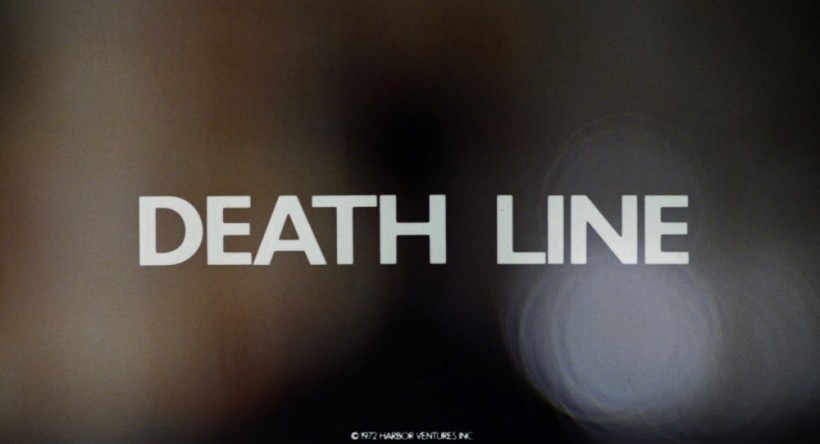
As a street film, Good Time rhymed nicely with this year’s essential retro ticket, Death Line (1972). Director Gary Sherman made the film as an American ex-pat living in England, keen to steep it in British culture, from Donald Pleasance spinning comic gold (his reason for accepting the role) as Police Inspector Calhoun with loud disdain for the standard issue tea bags at the station, to the film’s more general gaze down its long nose at those amoral colonials across the pond. Race is left out of this one, but class is front and centre, dealing with a rash of murders on London’s Underground, eventually traced to two remaining survivors of a decades old cave-in that left Tube labourers stranded and abandoned by the authorities, a story as old as railway construction itself. To up the ante, the story revolves around a young college couple, he from New York and she a local. They find the film’s first victim unconscious as they exit a subway train on their way home. She wants to get help, while he wants nothing to do with the situation. “We walk over these guys in New York,” he tells her. “We’re not in New York” is her reply. The message is clear: the countercultural currents of the early 70s spin around differing moral centres between the U.K. and U.S., and the film comes down hard on one side. The American cares not a whip for England’s systemic abuse of its own lower classes, and here the police chief shines in his own social position, eager to uncover the mystery of the Tube murders particularly when it might shine a negative light on his own superiors. It is the disappearance of one Officer of the British Empire that calls attention to the situation underground, lesser folk left uninvestigated. The tension around this division of attention comes to a head in a scene written specifically to secure Christopher Lee’s participation in the film: give me a scene with Donald Pleasance, he says, and I’m in. And what a scene it is, where Lee’s Stratton-Villiers of MI5 arrives on the scene at the OBE’s apartment just as Calhoun is about to uncover some scandalous material discovered in the closet, and shuts it down, emasculating Calhoun in the process.
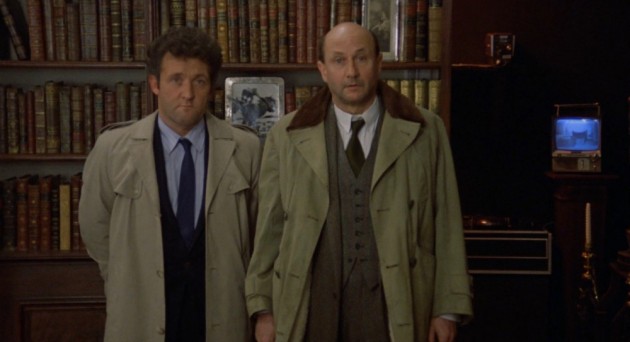
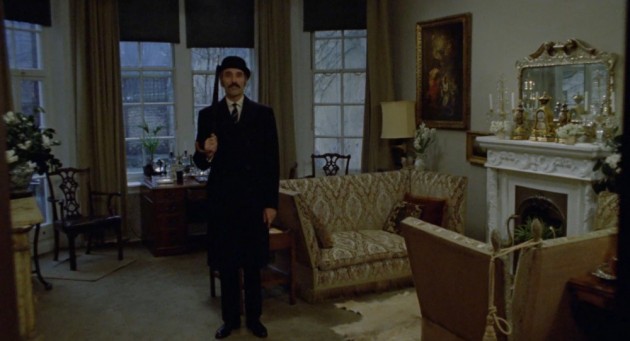
The film’s centrepiece is a seven-minute tracking shot, revealing the killer’s lair for the first time, presented intact here after various prior releases under the name Raw Meat had chopped it up (along with various other scenes across the film). Shot on location in a storage area off the main Underground lines, the camera pans around the space, revealing the grizzly artefacts of cannibalism and various supplies for long-term underground survival as we hear a steady heartbeat, water dripping, and various grunts and moans eventually shown to be coming from a decrepit couple, the man caring for his ailing wife, both suffering the effects of long lives lived under these conditions. The camera then dollies out through a door and backwards down a long tunnel, arched ceilings passing one after the next layering in deep focus before shifting left into a larger storage area, finally zooming in on a large pile of rubble in the corner before a tilt up to the ceiling provides the dark cover for a cut to the subway platform above, emphasizing the disconnection between these spaces. It’s a remarkable piece of historical footage and is also essential to the development of the plot as here we learn the killer’s motivation: to provide food for partner, the two of them the last descendants of the Tube tragedy’s victims.
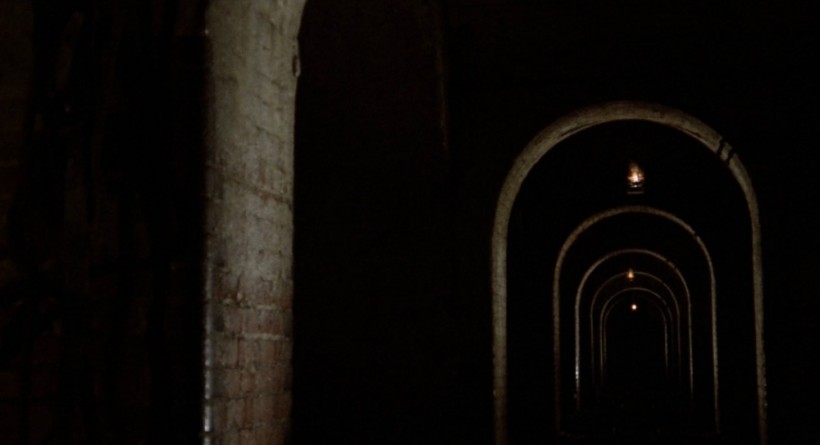
The long-take also allows for some exploration on the soundtrack, its temporal immediacy slipping into auditory flashback as we hear backwards through history to the sounds of the caves collapsing, people suffering and dying, babies being born, and the generations continuing on. It’s a fine bit of audiovisual counterpoint that turns what might be an indulgent set-piece into a device for narrative economy. It sets the stage for the climactic encounters at the end of the film, clarifying the spatial relationships in which the finale will play out. But it also speaks to a bit of class politics on the production itself, the filmmakers acknowledging that their location scouting revealed dozens of homeless people living on site in these tunnels, which they ironically had to clear out in order to make a film about people who live underground. The ethics are questionable, and unquestionably drive some of the narrative forward as these spaces are captured in their historical moment and enshrined in this excellent new transfer from, appropriately enough, Blue Underground.
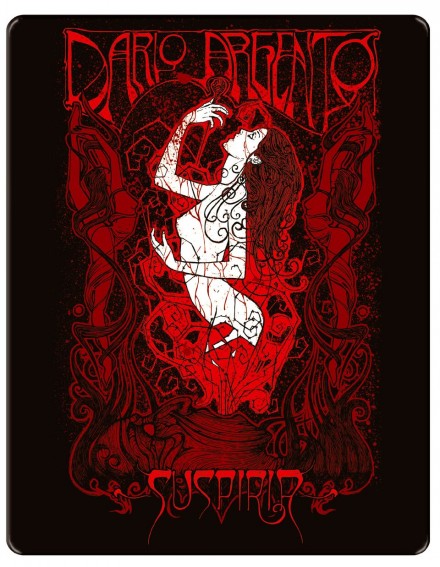
The other retro highlight this year, also featuring an American sojourning in Europe and the revelation of dark doings in deeply hidden areas, was the world premiere presentation of Synapse’s newly restored Suspiria. It is surprising that such a popular and widely available title – and one that is perhaps best known for its aesthetics – has gone so long without proper attention to transfer, but here it is. Scanned in 4K from the original camera negative, timed with the help of original cinematographer Luciano Tovoli, it truly is dramatically different from all prior versions available, including the various other HD releases recently floating around. Much confusion abounds in this area, since the same 4K negative scan was used for both Synapse’s North American release and Cult Films’ European release, but all the digital restoration work was done separately and with very different results (see DVD Beaver’s comprehensive rundown for more details). I first saw the film in a 35mm print at an early edition of Fantasia, and the experience was intense despite the print being in pretty bad shape. And then regular Halloween home screenings have come courtesy of the very good Anchor Bay DVD edition, which I got in the deluxe 3-disc set including the famous Goblin score on CD. In retrospect, the colour timing on the Anchor Bay DVD is closest to the new Synapse release, not suffering from the flattening and brightening of the overall palette, the scourge of so many HD releases these days and particularly detrimental to Suspiria’s highly idiosyncratic colour strategies.
For lay people, films in and around the giallo constellation can be a tough sell, and content-wise Suspiria is no exception with its less than coherent script, schlocky performances (complete with the peculiar clumsiness of dialogue spoken by actors communicating with each other in different languages and then dubbed according to the distribution market), and revelry in the vicious mutilation of women. But Suspiria stands apart from the pack in its ability to blow even sceptics away with its synergy of cinematography, art direction, and music, now more impressive than ever before. So at very least, it’s nice to have a version that finally does some justice a film that hangs its hat on how it looks and sounds. If this release can’t sell a neophyte on the genre, then nothing can.
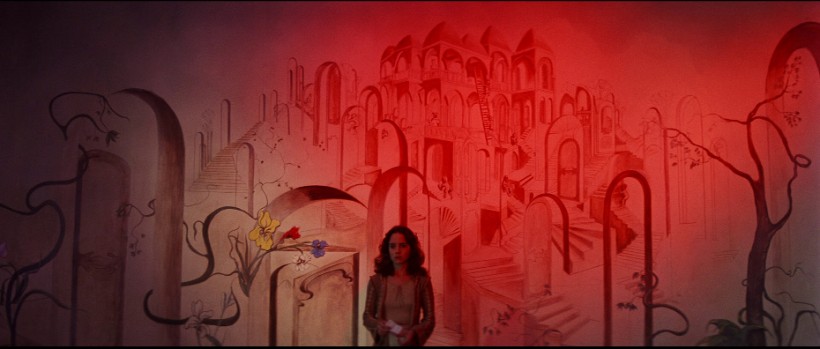
Perhaps most significant of all for the Synapse release is that here, for the first time on any home video release, they offer the original 4-channel surround sound mix, apparently unheard since its theatrical run in 1977 (and even then it would have been subject to theatres equipped for that format). This 4.0 soundtrack is not to be confused with the surround sound offerings on the other DVD and Blu-Ray releases, the Anchor Bay release even boasting a 6 channel DTS mix that sounds pretty damn good. But these prior multi-channel mixes have been extrapolated from mono and stereo tracks and mixed according to the modern-day conventions of surround sound that like to anchor dialogue in the center, offer directional sound effects across the left and right speakers, and ambient fill through the rears. The 4.0 mix, on the other hand, is anything but conventional. Major differences can be heard in the placement of dialogue, originally intended to be highly directional with voices emanating from any of the four speakers depending upon where the filmmakers positioned the characters in relation to the audience, something that simply isn’t done very often in the industry and which strikes an important balance with the quadrophonic presentation of the musical score replete with its own stable of whispers and voices that feel like they’re breathing down the back of your neck before they throw the windows open to the storm raging outside. The soundtrack is immersive and thunderous, well represented in Fantasia’s main Hall Theatre screening room with an audience as appreciative as possible. If only we could say as much about Christopher Nolan’s recent “unrestored” print of 2001: A Space Odyssey, which went out of its way to present a photochemical transfer made from original camera negatives – which was impressive when I saw it at Village East Cinemas in New York – but with a recent 5.1 sound mix that does little to represent what audiences would have heard in its experimental multi-channel presentations in the late 1960s. In an industry that continues to treat the image as hallowed and the sound as malleable upon the whims of the moment, Synapse has done right by Suspiria’s commitment to matching its visual extravagance with auditory punch.

Goblin live at La Tulipe, Montreal, Oct. 29th 2017 [Photo by Randolph Jordan]
Of course MOST of what delivers the power on Suspiria’s soundtrack comes from Goblin who, despite continual personnel reconfigurations, came to define the films of Dario Argento as clearly as John Williams has for Steven Spielberg or Tindersticks for Claire Denis. This is largely due to the chemistry between composer/keyboardist Claudio Simonetti and guitarist Massimo Morante, who continue to be active in keeping the music of Goblin alive (though not often together). Fantasia has developed a strong relationship with Goblin, sponsoring two Montreal shows in recent years, one in October of 2013 and the other following last year’s festival in October 2017 – neither with Simonetti but both with the other four members who played on the original Suspiria tracks.

Goblin live at La Tulipe, Montreal, Oct. 29th 2017 [Photo by Randolph Jordan]
Full disclosure here: My love of Goblin is limited. They struck gold with Suspiria, one of the most iconic soundtracks in the history of film, and pretty solid on its own two feet even through the unused tracks on the album. But there are diminishing returns across the rest of their discography, yielding maybe one or two good numbers per film, enough to fill a set for a live performance, and not much more. It was big news when they came around for their first North American tour in October of 2013 and we had great fun around Halloween time to hear them lay down their signature tracks in a live setting. That year they toured with Secret Chiefs 3 – no better live band working today for my money – who blew them out of the water with their repertoire for an imaginary giallo. This is a band that tours with John Zorn playing his Masada songbook. If you can play that stuff, you can play anything, and their virtuosity laid Goblin’s limited skill-set and advancing years in stark relief. The second time around they were paired more responsibly with the Morricone Youth who performed tasteful but largely non-threatening renditions of classics from the Italian maestro. Someone should mount a project to perform the music to Lizard in a Woman’s Skin live. But I digress.

Goblin’s Massimo Morante live at La Tulipe, Montreal, Oct. 29th 2017 [Photo by Randolph Jordan]
Goblin were never as good as the heavyweights of 70s prog-rock like King Crimson, Genesis, Yes, or Emerson Lake and Palmer. And Argento appeared to know it, hiring Keith Emerson himself for Inferno, follow-up to Suspiria, which he wanted to elevate via one of the exalted masters of the British prog scene. Meanwhile Emerson had other plans, wanting to escape the showiness of rock and establish himself as a more serious musician by doing a high profile orchestral film score with classically-tinted keyboard work. None of it ended up coming together quite as well as the magic recipe that fuelled Suspiria, particularly for prog fans who were treated to only one stellar track in the film, “Taxi Ride Rome,” undermined by poor placement and lack of coherence with the rest of the score.
In the end, Emerson’s position in relation to the world’s great film score composers ended up being something like Goblin’s position vis-à-vis the world’s prog rock masters: reaching for the top but falling considerably short. While on the whole I like Inferno better than it’s older sister on a number of fronts (could we hope for a similar treatment from Synapse?), Suspiria is more perfect in its fine-tuned balance of strengths and little concern for anything else. Synapse’s presentation of the soundtrack is the best you’ll hear of the famed Goblin score, live on stage and original vinyl pressings included, and there’s nowhere I would have rather experienced it than at its Fantasia premiere this year.
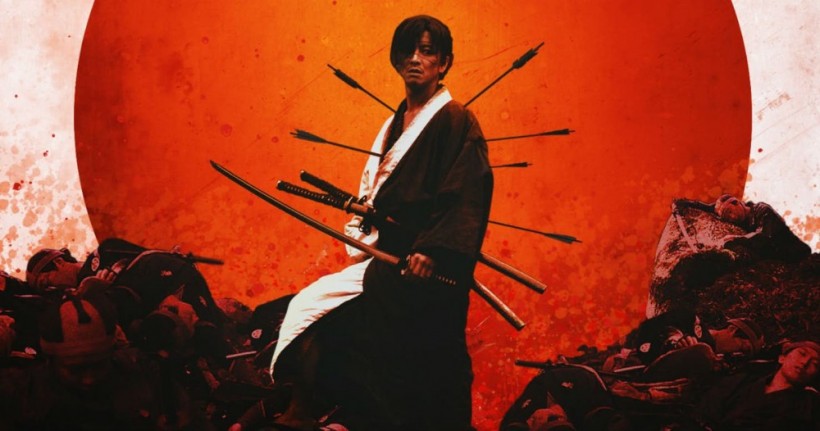
Speaking of Fantasia relationships, this year the festival selected Takashi Miike’s Jo-Jo’s Bizarre Adventure as one of the official opening films, appropriate after Miike’s first ever visit to the festival the year before to receive his lifetime achievement award after screening no less than 30 of his films since Fudoh arrived in 1997. Audiences have learned to be cautious with their expectations for Miike over the years as is bag of tricks has expanded to fit the vagaries of Japan’s shifting film industry over the last 20 years, proving himself to be an adept chameleon, rendering many titles that bear little resemblance to the works that put him on the map in the late 90s and early 2000s. I will admit to feeling luke-warm about this year’s entry – especially since buzz had been spreading about his 100th film Blade of the Immortal (though that number is contentious among those keeping track), touted as one of his best in years, but NOT on Fantasia’s schedule. Why, oh why must we suffer this fate? So frustrating – at least until its last minute addition was announced and it filled a TBA slot at the tail end of the schedule. It was worth the stress.
Skilled sword-fighter Manji slays 100 men in revenge for the murder of his kid sister, earning him the name 100 Killer. It also earned him the curse of immortality when a witch refuses his blood-soaked request to be put out of his misery, following the loss of a limb or two, and instead infuses his wounds with the sacred bloodworms that would live inside him and heal all injuries for decades to come. At least until he meets another fighter similarly cursed, 200 years old and tired of the endlessness. He has worm poison, and rigs a fight with Manji to result in his own contamination and death. And now, knowing that he could do the same for himself, he is faced with the question of whether or not to abandon his more recent hire, a young girl that reminds him of his slain sister, who seeks revenge against a clan of marauding killers set on systematically dismantling all training schools in the land so that they might take control over the samurai system. This, it turns out, as vengeance of their own for a grandfather kicked out of one of the more prominent schools for use of an unauthorized weapon in battle. This use saved the life of the head of the dojo, but broke with convention and could not be tolerated. And so the tale spins around the maintenance of tradition across generations, and those that would break with this.
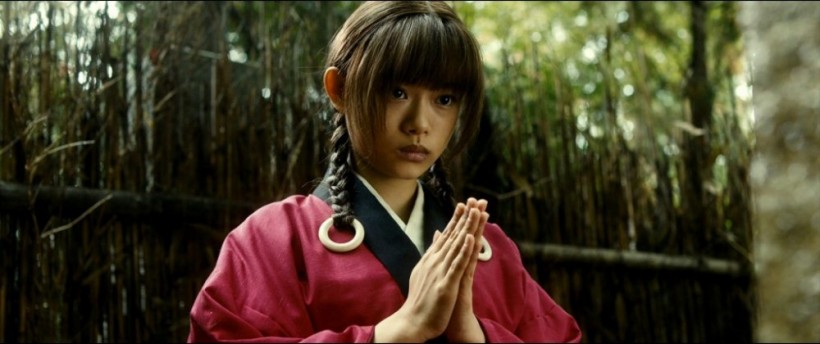
A tale as old as time. Perhaps also a parable for Miike’s own career? Here we find him in fine form wielding the anarchy of Izo with production values that could only have been made in the era of Miike the studio director, and only after staking his ground with the serious jidaigeki of 13 Assassins. Now, Miike can give us a 13 Assassins without the Kurosawa complex, leaning closer to Sogo Ishii’s Gojoe in tone, its supernatural elements embedded firmly in the materiality of the earth. Blade of the Immortal revels in the sumptuous colours and textures of forest floors and clothing fabrics. Moss has rarely looked this good on screen. And in its pursuit of the relentless the film spins an abstraction around death, which has become meaningless for its main purveyor. Allegiances become confused and break down. Who fights alongside whom and for what? Someone else has even been using Manji’s name, bolstering the legend of his kill count without taking credit (does Miike have one of these shadow filmmakers? It would explain a lot). And Manji ends with a choice: does he come down on the side of government, whom he has been defending by way of the girl, or on the side of the outlaws, with whom he sympathizes? In the end he doesn’t care, taking on both single-handedly, not unlike Miike who has navigated drastic shifts in budgets and styles deftly, slaying all that cross his path. In many ways, this is the perfect Miike film for the times. Miike is the 100 killer.
_440_668_90.jpg)
And this year’s underdog win goes to Town in a Lake, a slow burning creeper from the Philippines. In its quiet treatment of potentially supernatural elements surrounding the murder and disappearance of a pair of teenage girls from a small fishing village, I won’t be the first to invoke both Apitchatpong Weerasethakul and Twin Peaks as cinematic kin. Paced almost glacially, the film opens with a set of images that confound narrative coherence as the girls are forced into a car, which drives them through the night, glowing humanoid figures watching from the cover of the forest. One turns up dead, the other missing. Its mystery, with answers lying in the woods amidst odd sonorous ambiences, resembles the Lynch/Frost TV show, but its characterization of small village life on the edge of the wilderness is closer to Uncle Boonmee Who Can Remember His Past Lives. But here the resemblances end, for the main preoccupation of Town in a Lake lies in how the village’s government navigates increasing media interest from outside reporters amidst increasingly local paranoia. Conversations between governor and police revolve around what secret information to reveal and when, weighing the needs of the case with self-serving political interests and a genuine need to keep some details under wraps while suspects are still on the loose. A grieving mother proceeds with the memorial for her daughter while the media obsess over potential romantic entanglings with the missing girl: could this crime have something to do with sexual transgression in a conservative atmosphere? Or perhaps an extra-terrestrial is responsible, one who has been living among the humans too long for his curiosity to remain idle. “You have vilified us,” the leader tells his servant charged with the task of gathering information on Earth life, not unlike the reporters sent from other cities to discover the truth at the centre of the town of Matangtubig. But the town will keep some of its mysteries intact. One reporter, standing in the middle of the local river in front of a bridge that has become important in the case, chastises his cameraman for turning away to capture the sudden and noisy flight of a flock of birds out of the forest behind them. “What are you doing? It’s bad sound!” “You have a microphone asshole,” comes the reply, arguing that the reporter can feel free to continue his monologue even while off camera. But when the camera returns to its original framing the reporter is gone. And not long after, the town is gone as well, the exit of the extraterrestrial visitors marked by the onset of a typhoon that floods the village to its roofs. Is this global warming at work? Are the evils at the core of the film spun by humans? Aliens? Or perhaps the forces of nature herself? It is at the intersection of these possibilities that the film displays its magic – or perhaps Magic Realism is more accurate. The film revels in the mundane so that it might surprise us with the otherworldly, its oblique narrative as frustrating as it is illuminating as a gateway to the beyond. And there’s a message in there somewhere about the potentially catastrophic effects of government, media, and the people all working at cross-purposes in the time of climate change. The weather waits for nobody, and those who are able to leave have already gone.



_400_258_90_s_c1.jpg)

